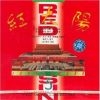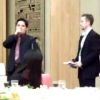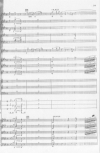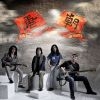Song and Dance Epic
Red is the East is propagated in grand style in 1964, when a Song and Dance Epic with this title is performed in honour of the 15th anniversary of the founding of the People’s Republic, by some 3000 workers, peasants and soldiers in the Hall of the People, an event which was documented on film and quickly disseminated to every corner of the country. This Song and Dance Epic (to be condemned during the Cultural Revolution, while its director would later become the director of the first model opera film) tells the story of the Chinese Communist Party’s great victory. It uses the colour red prominently, the colour of fertility, wealth and abundance (Wasserstrom 1984:19-20), and the colour of the sun which has long since become the symbol for Mao Zedong himself.
The epic begins, in grand style, with Red is the East which is put in scene quite literally as the ode to the sun, to which all the sunflowers, i.e. China’s workers, peasants and soldiers, turn with great happiness and devotion. The revolutionary song Red is the East is repeated and played in different variations several times at the beginning of the piece and the first scene of the epic ends with a repetition of the first verse of the song, sung, an octave higher, by all musicians and singers involved in the theatrical, now collectively calling Mao the “saviour of the people.” This grand performance which, like so much of the propaganda art of the Cultural Revolution, has been republished endlessly since the 1990s, shows once again that Red is the East and songs praising it could be heard long before the Cultural Revolution, then, and would not lose their sparkle even after the Cultural Revolution had ended (Performance of Red is the East).





































